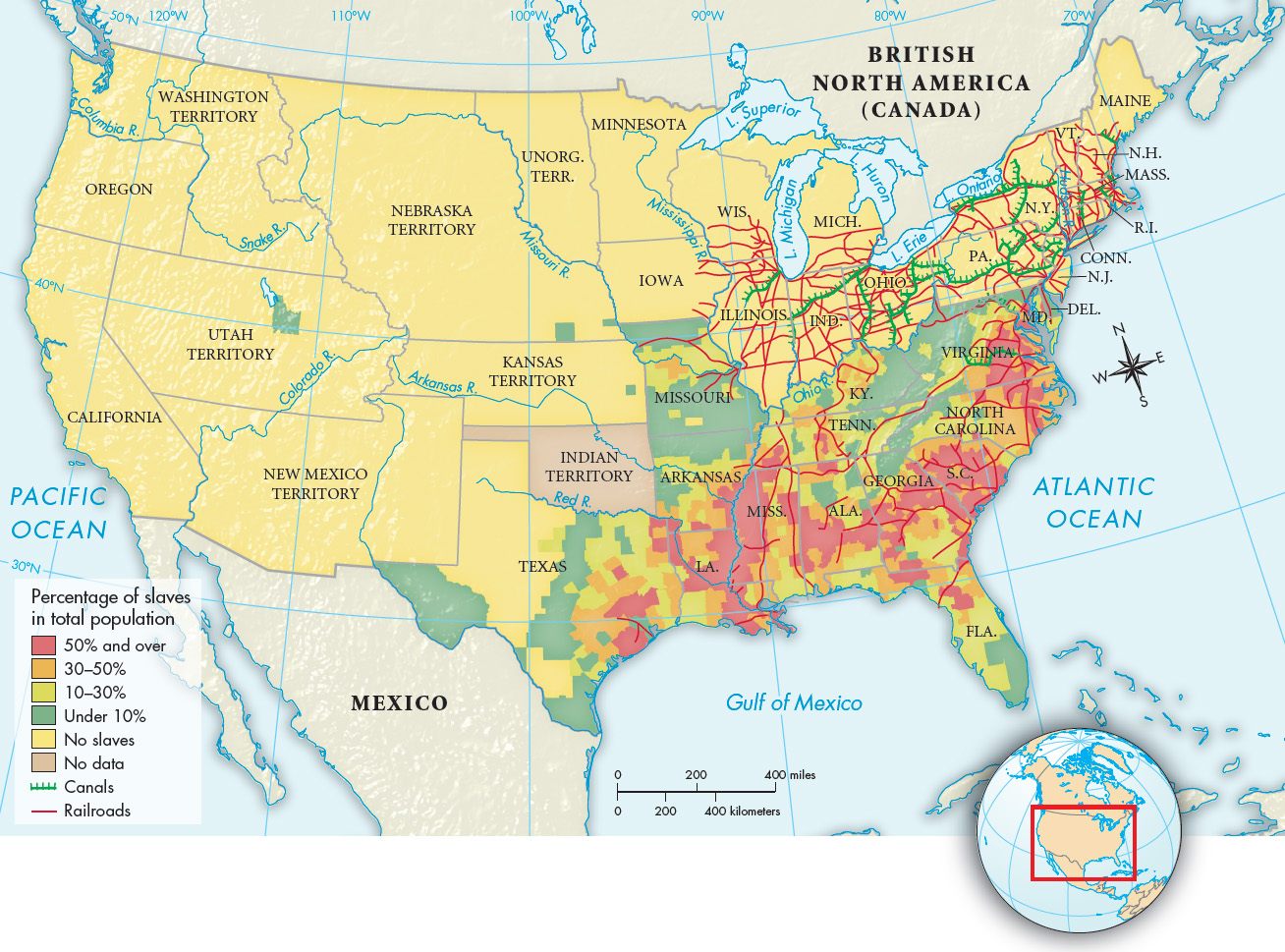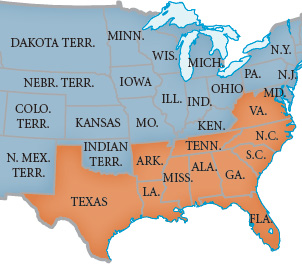A History of Western Society: Printed Page 762
A History of Western Society, Value Edition: Printed Page 771
Slavery and Nation Building in the United States
The United States also experienced a process of bloody nation building. Nominally united, the country was divided by slavery from its birth, and economic development in the young republic carried free and slaveholding states in very different directions. Northerners extended family farms westward and began building English-model factories in the northeast. By 1850 an industrializing, urbanizing North was also building canals and railroads and attracting most of the European immigrants arriving in the nation.
In sharp contrast, industry and cities developed more slowly in the South, and European immigrants largely avoided the region. Even though three-quarters of all Southern white families were small farmers and owned no slaves, plantation owners holding twenty or more slaves dominated the economy and society. These profit-minded slave owners used gangs of black slaves to establish a vast plantation economy across the Deep South, where cotton was king (Map 23.3). By 1850, the region produced 5 million bales a year, supplying textile mills in Europe and New England.

The rise of the cotton empire greatly expanded slave-based agriculture in the South, spurred exports, and played a key role in igniting rapid U.S. economic growth. The large profits flowing from cotton led influential Southerners to defend slavery. In doing so, Southern whites developed a strong cultural identity and came to see themselves as a closely knit “we” distinct from the Northern “they.” Because Northern whites viewed their free-labor system as more just, and economically and morally superior to slavery, North-South antagonisms intensified.

Tensions reached a climax after 1848 when the United States gained through war with Mexico a vast area stretching from west Texas to the Pacific Ocean. Debate over the extension of slavery in this new territory hardened attitudes on both sides. Abraham Lincoln’s election as president in 1860 gave Southern secessionists the chance they had been waiting for. Determined to win independence, eleven states left the Union and formed the Confederate States of America.
The resulting Civil War (1861–1865), the bloodiest conflict in American history, ended with the South decisively defeated and the Union preserved. In the aftermath of the war, certain dominant characteristics of American life and national culture took shape. Powerful business corporations emerged, steadfastly supported by the Republican Party during and after the war. The Homestead Act of 1862, which gave western land to settlers, and the Thirteenth Amendment of 1865, which ended slavery, reinforced the concept of free labor taking its chances in a market economy. Finally, the success of Lincoln and the North in holding the Union together seemed to confirm that the “manifest destiny” of the United States was indeed to straddle a continent as a great world power. Thus a new American nationalism, grounded in economic and territorial expansion, grew out of a civil war.